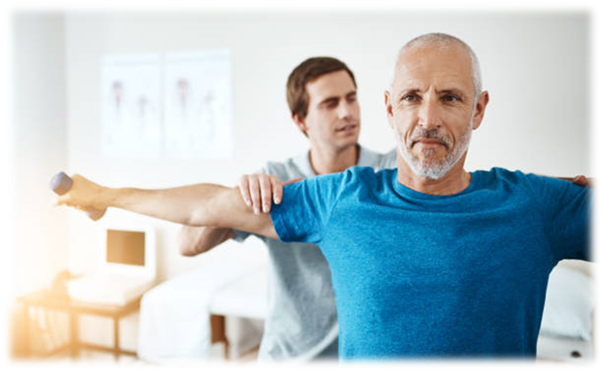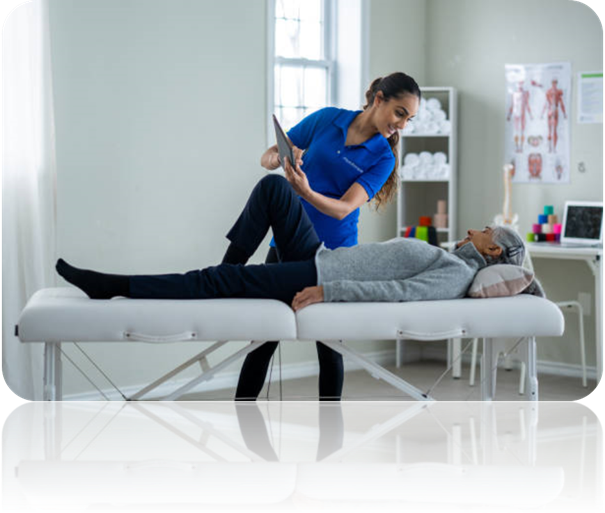
When it comes to spine health and sports performance, misinformation is everywhere. From outdated training advice to well-meaning but inaccurate tips, athletes often fall prey to myths that can hinder their progress—or worse, lead to injury.
Myth 1: “Back Pain Means You Should Stop All Activity”
The Truth:
While rest may be necessary for acute injuries, complete inactivity often does more harm than good. Research shows that gentle movement and targeted exercises can actually promote healing, reduce stiffness, and prevent future flare-ups. Urban Sports & Rehab can guide safe modifications to keep you active while protecting your spine.
Why the Myth Is Harmful:
Prolonged rest can lead to muscle weakness, joint stiffness, and delayed recovery—making it harder to return to sport.
TIPS - Continuing activity without proper guidance may worsen an undiagnosed injury. It’s essential to confirm the root cause of back pain with a professional before resuming or modifying your routine.
Myth 2: “Lifting Weights Is Bad for Your Back”
The Truth:
When done with proper form and appropriate progression, strength training is one of the best ways to protect your spine. It strengthens your core, stabilizes your vertebrae, and helps prevent injuries. The key is personalized guidance, especially for beginners or those with a history of back pain.
Why the Myth Is Harmful:
Avoiding strength work can leave your back vulnerable to strains and reduce overall performance.
TIPS - Poor form, excessive weight, or overtraining—even with good intentions—can still lead to injuries such as muscle strains or disc issues. Supervision and technique mastery are critical.
Myth 3: “A Strong Core Means Six-Pack Abs”
The Truth:
Your visible abs (rectus abdominis) are only part of the picture. A truly strong core includes deep muscles like the transverse abdominis, multifidus, and pelvic floor—critical for spinal stability. Exercises like planks, bird dogs, and dead bugs are far more effective for spine health than endless crunches.
Why the Myth Is Harmful:
Focusing only on aesthetics neglects the deeper support system your spine relies on, increasing injury risk.
TIPS - Some core-strengthening exercises, if done incorrectly, can still strain the lower back. Tailored programs are needed to match individual needs and prevent injury from improper technique.
Myth 4: “If You’re Young and Fit, Spine Issues Won’t Affect You”
The Truth:
Spine health isn’t just a concern for older adults. Athletes of all ages are at risk, especially in high-impact or repetitive sports. Poor training habits, inadequate recovery, or biomechanical imbalances can trigger back problems even in elite, young athletes.
Why the Myth Is Harmful:
Ignoring spine care early on may lead to chronic issues that could limit your athletic career later.
TIPS - Young athletes may underestimate symptoms and delay seeking care, which can allow small problems to escalate over time. Early education and monitoring are essential.
Myth 5: “Flexibility Alone Prevents Back Injuries”
The Truth:
Flexibility is important, but mobility and strength are equally crucial. A hyper-flexible spine without stability can be just as injury-prone as a stiff one. Balanced training that combines flexibility, core stability, and strength is the best defence against injury.
Why the Myth Is Harmful:
Overemphasizing stretching without building support can lead to instability and pain.
TIPS - Excessive flexibility work, particularly without balancing strength, can lead to joint hypermobility and potential spinal instability, making injuries more likely.

Myth 6: “Pain-Free Means Problem-Free”
The Truth:
The absence of pain doesn’t always mean your spine is in optimal health. Subtle biomechanical imbalances or asymmetrical movement patterns can go unnoticed—until they cause bigger issues down the line. Regular physiotherapy check-ups can spot and correct these hidden risks.
Why the Myth Is Harmful:
Waiting for pain to appear may mean you are already dealing with an advanced problem.
TIPS - Frequent check-ups require time and commitment. Some minor imbalances may be detected that don’t immediately require correction, which can sometimes lead to unnecessary worry if not explained well.
Myth 7: “Back Belts and Braces Are the Best Way to Protect Your Spine”
The Truth:
While belts and braces can provide temporary support during certain activities or injury recovery, they are not a long-term solution. Over-reliance can weaken your natural core stability and make you more dependent on external aids.
Why the Myth Is Harmful:
Relying on braces without building core strength leaves you vulnerable once the support is removed.
TIPS - In some cases, certain athletes may still benefit from short-term brace use, but misuse or prolonged use can delay natural muscle strengthening, causing longer-term setbacks.

The Physiotherapy Advantage
Urban Sports & Rehab uniquely positioned to debunk myths and provide personalized, evidence-based care. Whether it’s improving your posture, fine-tuning your technique, or designing a sport-specific rehab plan, expert guidance can keep your spine—and your entire body—functioning at its best.
Conclusion
When it comes to spine health and sports performance, facts matter. Don’t let myths derail your progress or put your body at risk. By staying informed and partnering with a skilled physiotherapist, you can train smarter, recover faster, and protect your spine for the long run.
#SpineHealthMyths #PhysiotherapyFacts #SportsInjuryPrevention #SpineCareTips #BackPainMyths #AthleteWellness #SportsPhysiotherapy #HealthySpine #PostureMatters #FactVsFictionPhysio #JohorBahruPhysiotherapy #JBRehabCenter #PhysioJohorBahru #NeckPainJohorBahru #JBWellnessClinic #RehabJohorBahru #JBSpineCare #NeckReliefJB #JBPhysioExperts #JohorBahruPainRelief






 BR 14636
BR 14636  VN 8626
VN 8626  US 6159
US 6159  AR 2318
AR 2318  SG 1371
SG 1371  CN 1155
CN 1155  EC 837
EC 837  GB 686
GB 686 



